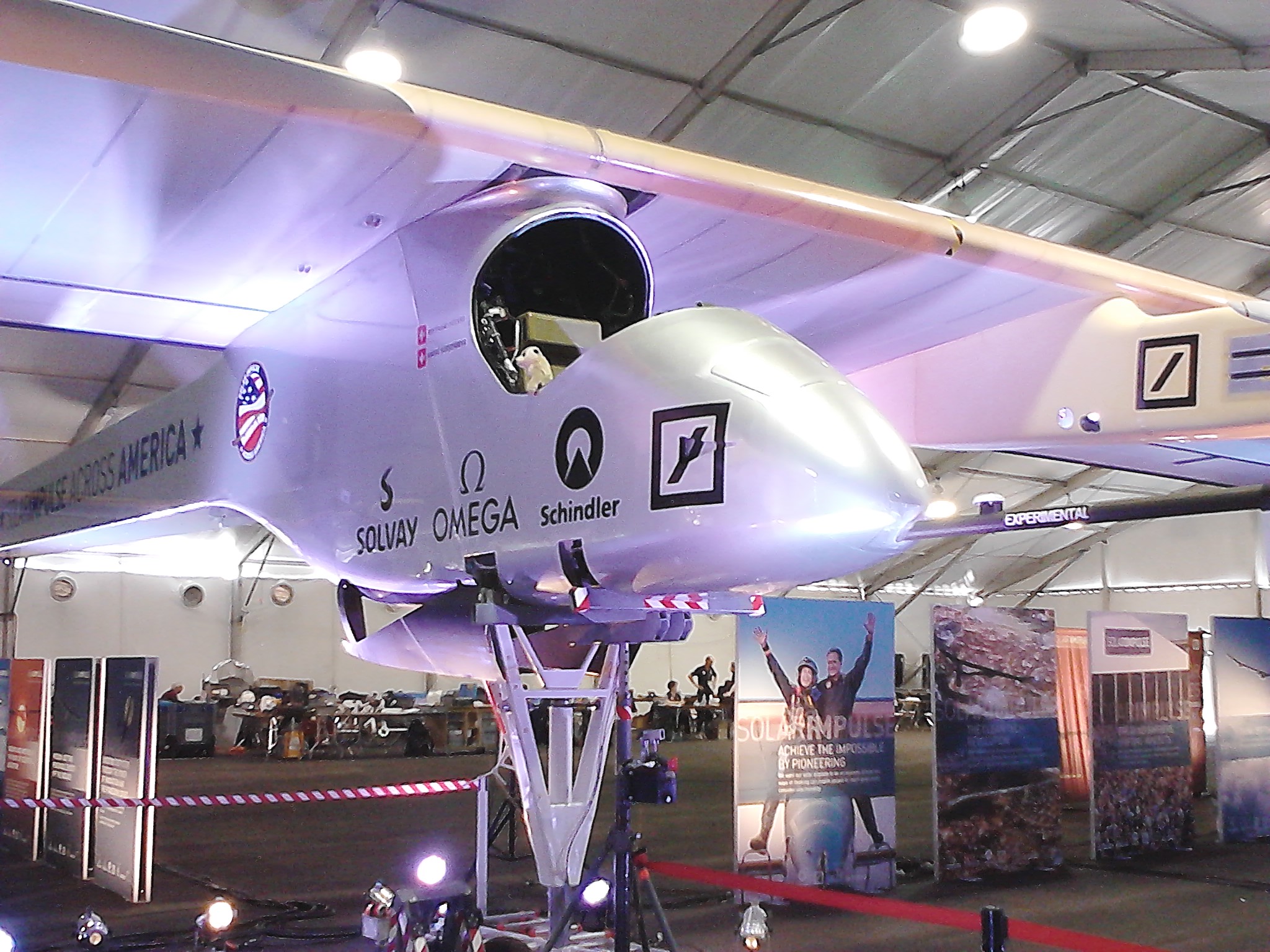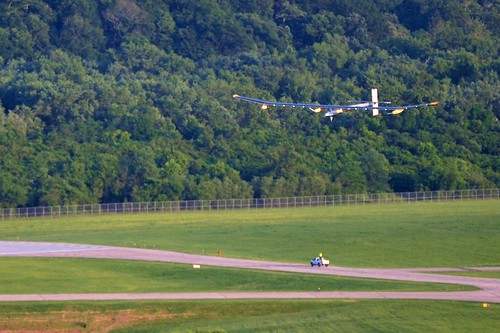In March 1999, when Swiss psychiatrist/balloonist Bertrand Piccard completed the first ever non-stop circumnavigation of the globe in a hot-air balloon, his 19 day, 21 hour, 47 minute flight gave birth to a new dream and pursuit of another historic first. Piccard’s goal became to be the first to fly around the world in an aircraft consuming no fuel. With the development of Solar Impulse, the prototype of which was designed in 2007 with production starting in 2008 and completed in 2009, that dream may soon become a reality.
Solar Impulse is the first airplane of its kind, running totally on electric engines powered by a combination of solar power and lithium polymer batteries that store energy and are recharged by sunlight while in flight. It has four 10-horsepower engines, each driving one of four propellers, and has an average flying speed of 43 MPH. The speed required for takeoff is 27 MPH.
With a total length of 71 feet and a wingspan of 208 feet, the plane is covered with an array of 11,628 solar cells. It weighs 3,527 pounds and is 20 feet in height. The solar cells are located on the wings and on the horizontal stabilizer. The propellers are 11 feet in diameter and rotate at speeds of 200 to 400 RPM.
A History of Historic Flights
December 2009 saw the first test flight of Solar Impulse, which amounted to a short 350-meter hop. April 7, 2010 witnessed its first real flight in which the plane was flown for a total of 1.5 hours, reaching an altitude of just under 4,000 feet. This flight was accomplished using only battery power, but was soon followed up on May 28, 2010 by a flight using strictly solar power while simultaneously charging the onboard batteries.
While each of these flights was another historic first, the real record breaker occurred on July 7-8, 2010, when André Borschberg, co-founder and CEO of the Swiss company responsible for development of the aircraft, flew it non-stop for 26 hours, including nine nighttime hours. 2011 saw the plane being flown from Brussels to Paris, which was its first international flight. The following year, a trip was made from Payerne, Switzerland to Rabat, Morocco, and then back again, constituting its first intercontinental flight. This last trip was accomplished in seven separate legs and saw Piccard and Borschberg flying together as co-pilots in the cockpit.
Solar Impulse’s Final Flight Before Retirement
The last record-busting flight for Solar Impulse started on May 3, 2013, beginning in San Francisco and eventually ending in New York (JFK Airport) after 18 hours, 23 minutes flying time. This was a multi-leg journey, with stops taking place in Phoenix, Dallas/Fort Worth, St Louis, Cincinnati and Washington, D.C. The second leg, from San Francisco to DFW, went into the record books as the world’s new distance record for solar flight. The entire trip, including the various stops, took about two months.
During the last leg (D.C. to NYC) of this historic west-east crossing of the U.S., a rip in the fabric of the left wing was observed, causing the pilots to curtail the flight and come in about three hours earlier than scheduled. While pilot Borschberg said there was no danger, the torn fabric made the 230-mile flight from D.C. to New York “especially difficult.”
Once over New York, and before setting down at JFK Airport, it had been planned to take the Solar Impulse over several of New York City’s more famous landmarks. This plan was tossed aside, however, once the wing problem was discovered. Touchdown, though a bit early, was perfectly uneventful.



